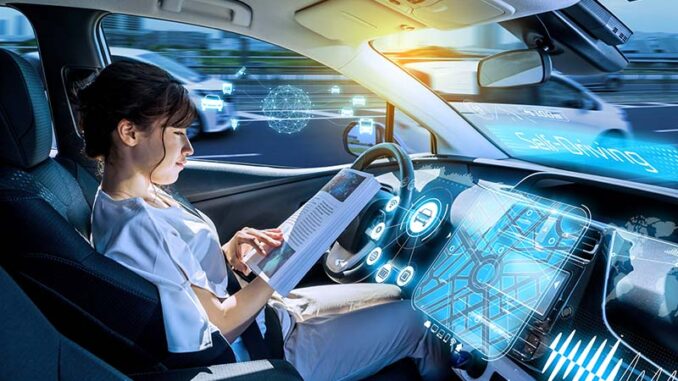
The automotive industry is undergoing a profound transformation, driven by the increasing need for sustainable transportation and advancements in technology. Two of the most prominent emerging technologies in this sector are Electric Vehicles (EVs) and Autonomous Driving. These innovations have the potential to revolutionize the way we commute and reshape the entire automotive landscape.
Table of Contents
Electric Vehicles (EVs)
Electric vehicles have gained considerable momentum in recent years due to their eco-friendly nature and the push for reducing greenhouse gas emissions. Unlike traditional internal combustion engine vehicles that rely on fossil fuels, EVs are powered by electricity stored in rechargeable batteries. This shift towards electrification is seen as a critical step in combating climate change and achieving a greener future.
The advantages of EVs are numerous. Firstly, they produce zero tailpipe emissions, reducing harmful pollutants and improving air quality in urban environments. This contributes to a significant decrease in greenhouse gas emissions, combating global warming and its associated impacts. Secondly, the operational costs of EVs are generally lower than their gasoline counterparts, as electricity is often cheaper than gasoline, and the maintenance requirements are reduced due to fewer moving parts. Thirdly, the advancement of battery technology has led to improvements in range and charging infrastructure, addressing the range anxiety that was once a major concern for potential EV buyers.
Governments and automotive manufacturers alike have recognized the potential of electric vehicles. Various countries have implemented incentives and regulations to promote the adoption of EVs, including tax credits, rebates, and stricter emission standards. Automotive companies are investing heavily in research and development to create compelling electric models that appeal to consumers. As a result, the market share of EVs is steadily growing, and the industry is poised for a future dominated by electric mobility.
Autonomous Driving
Autonomous driving, also known as self-driving cars, is another game-changing technology in the automotive industry. It involves vehicles equipped with advanced sensors, cameras, radar systems, and artificial intelligence algorithms that enable them to navigate and operate without human intervention. The promise of autonomous driving lies in its potential to enhance safety, efficiency, and convenience on the roads.
Safety is a primary motivation behind autonomous driving technology. Human error is a leading cause of road accidents, and self-driving cars have the potential to dramatically reduce these incidents. Autonomous vehicles can react faster and more accurately to their surroundings, avoiding collisions and adhering to traffic rules more consistently.
Beyond safety, autonomous driving offers numerous other benefits. It can improve traffic flow, reduce congestion, and optimize fuel consumption through smoother driving patterns. Additionally, it promises enhanced mobility for people with disabilities or those unable to drive, enabling greater independence and access to transportation.
The development and deployment of autonomous driving face several challenges, including regulatory hurdles, technological limitations, and public acceptance. While significant progress has been made, achieving full autonomy on all roads and in all conditions remains an ongoing effort.
Composite substances
Composite materials may be utilized to make a vehicle lighter and more sustainable, as demonstrated by AEHRA, one of the most innovative companies and vehicles in the EV market. For its SUV model, the business is maximizing the use of endlessly recyclable material by using sheet-molded carbon.
The advanced driving assistance system
sophisticated driver assistance technologies are now in use, opening up new options and paving the road for more sophisticated autonomous capabilities. These options, which range in complexity, not only give EV users more comfort and convenience while driving but also increase vehicle safety by allowing the vehicle to pay attention to the road at all times. These technologies are already being developed to allow self-driving automobiles, which may someday replace more traditional modes of transportation.
V2G (Vehicle to Grid)
The grid’s interconnectedness with automobiles is what makes EVs crucial for a sustainable future. Solutions like vehicle-to-grid (V2G) or a home network that enables homeowners to go off the grid are crucial in enabling drivers to get the most out of their charge while also optimizing the grid network for a much higher number of cars.
Infrastructure for public charging
EV charging infrastructure is the backbone of the business and is one of the crucial technologies that is presently undergoing widespread installation in some countries with plans to establish charging networks. It enables drivers to go great distances without sacrificing comfort.
In conclusion, the automotive industry is at the cusp of a major revolution with the rise of Electric Vehicles and Autonomous Driving. EVs offer a sustainable and environmentally friendly alternative to traditional gasoline-powered vehicles, and they are already reshaping the transportation sector. On the other hand, Autonomous Driving promises to revolutionize road safety and mobility, paving the way for a more efficient and interconnected transportation system. Both technologies have the potential to transform our cities, reduce environmental impact, and redefine the way we commute. As research and investment continue, we can anticipate a future where electric and self-driving vehicles become the new norm, driving us towards a cleaner, safer, and more convenient tomorrow.

Leave a Reply